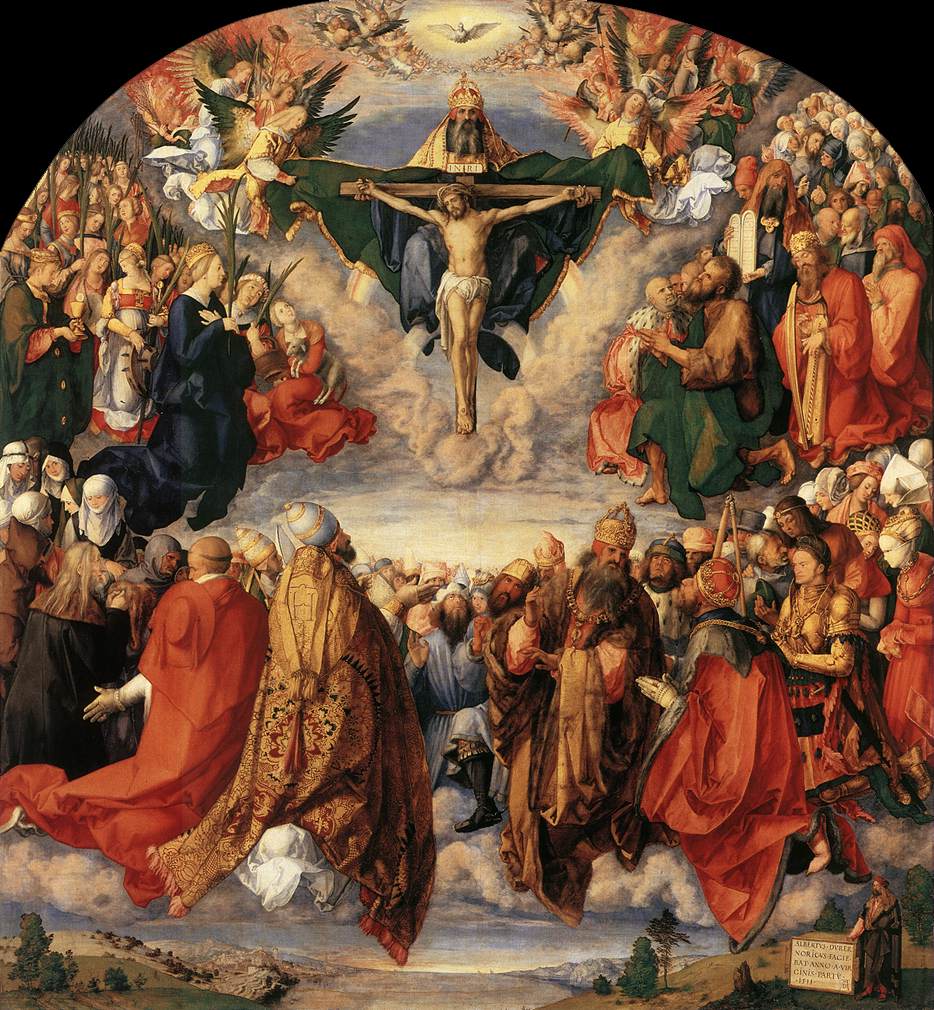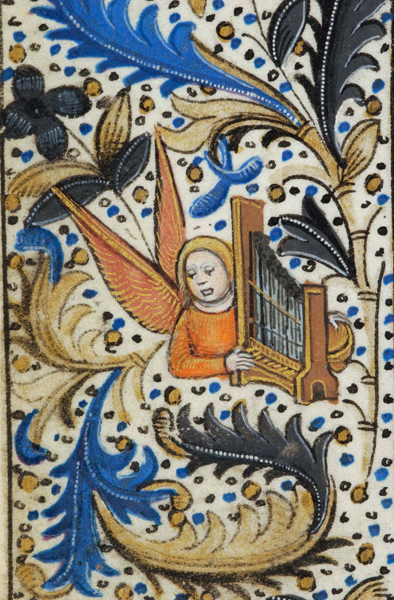Fauré’s Pavane
November 8, 2018
REST YOUR weary mind with French composer Gabriel Fauré’s Pavane (1845-1924), which evokes the Spanish court dance of the same name.
November 8, 2018
REST YOUR weary mind with French composer Gabriel Fauré’s Pavane (1845-1924), which evokes the Spanish court dance of the same name.
November 8, 2018
MANY of the commenters on Youtube are suspicious of this report about an alleged shooting at a bar in Thousand Oaks, California. Isn’t it nice to see that many people have caught on? They note that the two women in a pink blanket seem like actors. Judge for yourself. One of them managed to count the number of shots (18-20) in the rounds of the semi-automatic weapon while she was supposedly standing in the crowd under heavy gunfire. She also says “they” were throwing smoke bombs during the shooting. Who is the “they?” The women appear to be almost laughing.
Here is another report from CBS. Many commenters are not buying the strangely calm reaction and very specific details of these alleged heroes. These two will never get a crisis actor award. They’re the bottom of the barrel. No tears, no bodies. No “utter chaos.” The cell phone cameras that are everywhere in America manage to miraculously disappear when it comes to mass shootings. Another day, another psy-op.
November 7, 2018

GAVIN NEWSOM, the newly elected governor of California, helped his mother commit suicide in 2002. The story was initially reported by The New Yorker, which interviewed Newsom about it, and most recently by National Review. His mother was suffering from breast cancer and her son was apparently not enthusiastic about caring for her. According to The New Yorker:
Newsom’s sister, Hilary, said that when their mother had breast cancer, in her fifties, he was difficult to reach. “Gavin had trouble explaining to me how hard for him it was to be with her when she was dying, and I had trouble explaining to him how much I needed him,” she said. “Back then, he seemed like the kind of guy who would never change a diaper.”
In May, 2002, his mother decided to end her life through assisted suicide. Newsom recalled, “She left me a message, because I was too busy: ‘Hope you’re well. Next Wednesday will be the last day for me. Hope you can make it.’
I saved the cassette with the message on it, that’s how sick I am.” He crossed his arms and jammed his hands into his armpits. “I have P.T.S.D., and this is bringing it all back,” he said. “The night before we gave her the drugs, I cooked her dinner, hard-boiled eggs, and she told me, ‘Get out of politics.’ She was worried about the stress on me.”
Newsom, who claims to be Catholic (but not in “an indoctrinated way,”) supports abortion, same-sex “marriage” and physician-assisted suicide murder. At the time of his mother’s death in San Francisco, assisted suicide was a felony. Newsom’s parents divorced when he was two. He also is divorced, and has “remarried.” Read More »
November 7, 2018
SOME analysis from Michael Hoffman:
Here (below) we reprint two brief analyses of the election. The first, by Gerald Seib, demonstrates that the nation, despite the mass media being biased against the GOP with a malice seldom witnessed since the days of yellow journalism, did not abandon or repudiate Trump. The base stood by him despite a hellstorm of media calumny and the Deep State’s last inning “October surprise” in the form of the dreadful Pittsburg synagogue massacre, and fake “mail bombs” sent to Democrats.
The second takeaway is from the New York Times and shows the degree to which the Democrats are depending on the replacement of us with a population transfer from the Third World in order to gain power.
We conclude with a few ominous words from Patrick J. Buchanan illuminating an unstated fact — that in the final analysis it may be true that what killed our American dream was our collective refusal to have the three children per couple that is the bare minimum necessary to continue our existence as a people. The fault is ours. No politician, including Trump, has placed the blame where it truly belongs.[cont.]
Mr, Hoffman has made an especially good point in the last paragraph. If Americans had continued to have children and not embraced the mortal sin of contraception, we would not face this disaster because open borders would have been rejected in the early stages.
November 6, 2018
We believe that there is a place called purgatory, in which the souls who depart this life without being perfectly cleansed from all imperfections are detained and must suffer until they have fully satisfied the justice of God. This faith is founded upon Scripture, tradition, and reason.
Read more here.
November 6, 2018

“GRATEFUL READER” writes:
“Catharsis on the Mall–Waking from the American Dream” is a public event that will take place on the National Mall in Washington, D.C. this upcoming Veteran’s Day Weekend. The event appears to be three days of resentment, pornography, yoga, other occult activities and scapegoating, with “Avant-Garde art,” a “Graphic Sex Project,” a “Healing Earth Altar” and the burning of an enormous, lifelike statue of a naked woman.
It’s an annual “quasi-religious retreat… in the spirit of communal and individual healing.” Beware the web-page photographs, some are ghastly. Read more here. Read More »
November 6, 2018
IF democracy is so great, how come politicians don’t talk about some of the most important issues? Here’s a documentary that I hope will keep you balanced on Election Day. If voting really made a difference, it would be illegal.
November 3, 2018

JOHN TAYLOR GATTO, the public school teacher who waged war against public schools, died at the age of 82 on October, 25, 2018.
I enjoyed Gatto’s writings when I discovered them many years ago, especially his books, Weapons of Mass Instruction and Dumbing Us Down: The Hidden Agenda of Compulsory Schooling.
This is an excerpt from his essay, “Against School:”
I taught for thirty years in some of the worst schools in Manhattan, and in some of the best, and during that time I became an expert in boredom. Boredom was everywhere in my world, and if you asked the kids, as I often did, why they felt so bored, they always gave the same answers: They said the work was stupid, that it made no sense, that they already knew it. They said they wanted to be doing something real, not just sitting around. They said teachers didn’t seem to know much about their subjects and clearly weren’t interested in learning more. And the kids were right: their teachers were every bit as bored as they were. Read More »
November 3, 2018
ALAN writes:
I would suggest….that Western society today [ 1973 ], deluded into complacency by its technological sophistication and neglectful of the things of the spirit, is in the condition of a blind man tottering precariously on the edge of a cliff: In such a situation, it is wisdom itself to counsel an immediate halt, then a step backward….
“Great literature is that which over centuries has sustained and elevated…. Such art involves a prodigious effort and concentration on the part of its creator and demands a cultivated response from its audience. As such it is exclusive, in terms of both those who create it and those who can appreciate it. It necessarily constitutes a minority culture and is therefore to be detested and feared by most contemporary artists and writers, with their egalitarian aims and allegiance, reinforced by the financial rewards of catering to an undiscriminating mass market…..
— Professor Duncan Williams, “The Liberty of Privacy,” National Review, Dec. 21, 1973, p. 1408
Imagine what he would say if he were here today and could see the extent to which modern Americans have ignored his thoughtful and sensible advice. Read More »
November 1, 2018

HALLOWEEN offers a vision of the damned. The Feast of All Saints offers a vision of heaven.
O Christ, Thy guilty people spare!
Lo, bending at Thy gracious throne,
Thy Virgin Mother pours her prayer,
Imploring pardon for her own.
Ye Angels, happy evermore!
Who in your circles nine ascend,
As ye have guarded us before,
So still from harm our steps defend.
Ye Prophets and Apostles high!
Behold our penitential tears;
And plead for us when death is nigh,
And our all-searching Judge appears.
Ye Martyrs all! a purple band,
And Confessors, a white-robed train;
Oh, call us to our native land,
From this our exile, back again. Read More »
October 31, 2018
What … “The Editorial Board” of The Anti-New York Times would like to specifically address in today’s rebuttal is the use of the word “stuns” in the headline — “Growing Anti-Semitism Stuns American Jews.” And we truly do believe that many of the self-chosenites are indeed “stunned.” Read More »
October 31, 2018
THE excesses of Halloween — both its commercialism and occult grotesqueries — have led some Americans to reject the day altogether. It’s no wonder. Even normal days are creepy and horror-filled — with people walking around with purple hair and fish hooks in their faces. Halloween has likewise become so extreme in some places it seems like a trip to a super-commercialized corner of hell.
A Protestant writer has turned his back on Halloween:
“Even little girls as young as three years old are being dressed up in sexually provocative costumes. What kind of message does this send to them?”
His concerns are valid. But he then claims a scriptural basis for totally condemning Halloween celebrations:
The Scriptures are very clear about this sort of thing. Deuteronomy 18:9-13 says the following: “When you enter the land the Lord your God is giving you, do not learn to imitate the detestable ways of the nations there. Let no one be found among you who sacrifices his son or daughter in the fire, who practices divination or sorcery, interprets omens, engages in witchcraft, or casts spells, or who is a medium or spiritist or who consults with the dead. Anyone who does these things is detestable to the Lord”.
Is a child who dresses up as a princess, monster or ghost really engaging in witchcraft and sorcery?
Some Catholics also are eschewing Halloween and opting for All Saints Day parties instead. Children dress up as saints instead of witches or ghosts.
But let’s face it. It’s just not as much fun to dress up as a saint as it is to dress up as a sinner. For this day, it should be okay to be a swashbuckling pirate or a princess with excess jewelry. That isn’t the same thing as endorsing piracy or vanity. It isn’t Catholic to condemn fun or categorically ban images of demonic evil — think of all the hideous gargoyles on medieval cathedrals.
Halloween, though secularized, has Christian meaning. One of the purposes of the day is to remind us of hell. And hell is scary.
Fish Eaters offers some history:
The Vigil of, or evening before, All Hallows’ (“Hallows’ Eve,” or “Hallowe’en”) came, in Irish popular piety, to be a day of remembering the dead who are neither in Purgatory or Heaven, but are damned, and these customs spread to many parts of the world. Thus we have the popular focus of Hallowe’en as the reality of Hell, hence its scary character and focus on evil and how to avoid it, the sad fate of the souls of the damned, etc. Read More »
October 30, 2018
FROM Chuck Baldwin:
To know whether a politician—especially a President—is in the pocket of the Deep State, look no further than the way he or she wages war. And anyone who is even halfway objective and awake can see that Donald Trump has become one of the Deep State’s most effective servants.
I’ll say it straight out: The Deep State doesn’t hate or fear Donald Trump; it loves Donald Trump, because Donald Trump is the warmonger’s warmonger.
Donald Trump is on a pace to drop more bombs and kill more innocent people during his first four years in office than Barack Obama did during eight years in office. In fact, Trump is dropping a bomb somewhere in the world every 12 minutes.
October 29, 2018
CAROLYN F. writes:
I was surprised by your answer to H.F. (possibly because of this post). To me this is a no-brainer. She should stop studying to be a doctor. Even though she says it was her decision to study medicine, and not the decision of her parents, their expectations of her to “earn a professional degree” likely have played a role in the career path she’s chosen. Also, who knows the degree to which our feminist-run society has also influenced her to have a demanding career and put marriage and motherhood on the back burner.
Why should she set herself up for the problem of the “mutual exclusiveness” of being a homeschooling mom and a physician, if she does meet someone to marry and has children (despite her thoughts about the nobility of celibacy)? Read More »
October 29, 2018
(TURN OFF the truly gruesome sound in this video and sing the following to the tune of “Girls Just Wanna Have Fun”)
NUNS JUST WANNA HAVE FUN
I come to church in the morning light
Deacon Bob says everything is new and bright
Oh deacon dear we’re the fortunate ones
And nuns they wanna have fun
Oh nuns just want to have fun
[Beepy doo, Beepy da]
The dancers arrive in the middle of the night
They need to get their altar disco just right
All that stuff about Calvary was way overdone
Because Catholics they wanna have fun
Oh Catholics just want to have fun
That’s all they really wa-a-a-ant
Some fun
When the working day is done
Oh nuns, they wanna have fun
Oh nuns just wanta have fun (altar girls and boys wanna have fun, nuns wanna have, priests wanna have fun)
[Beepy doo, beepy da]
Some Catholics take a beautiful Mass
And kneel hidden away from the rest of the world
But we want to be the ones to walk in the sun
Oh Catholics they wanna have fun
Oh Catholics just wanna have
That’s all they really wa-a-a-n-ooh-t
Some fun…
When the working day is done,
Oh, nuns they wanna have fun …
[Beepy dooo, beepy da]
Ohhhhhhhh, fun, fun, Ohhhhh, just wanna …
October 29, 2018

PEOPLE with emotional difficulties are often diagnosed today with “bipolar disorder.”
“Bipolar disorder” is not a scientific diagnosis. You can’t take a physical test and be assured that you have an organic condition. The diagnosis is based on subjective interpretation of symptoms. Mood swings — ranging between manic thoughts and depression — are said to characterize this illness.
Some individuals have organic predispositions and temperaments that make mood swings more likely and truly challenging, or even incapacitating. But I believe this diagnosis is so wildly popular for a deeper reason. The human condition itself is bipolar.
We all swing between two poles.
What are those poles?
We can simplify them and call them, everything and nothing. Read More »
October 29, 2018
[This entry has been updated.]
IN the aftermath of real shootings, everything is done to save lives. Contained havoc prevails as victims are frantically treated and rushed to hospitals. Gore is visible and messy; rescuers are in too much of a rush to hide it. Trauma centers can sometimes save even those who have been shot in the head. Rarely is a victim conclusively declared dead at the scene and then left without being taken to the nearest trauma center. And if such poor treatment occurred, lawsuits would result.
In our day of pervasive cellphones, dozens of images of vivid carnage and its repulsive chaos would quickly emerge after a real mass shooting. In fake shootings, you see no evidence of this frantic rescue effort and no convincing gore. Instead, you see lots of police standing around or rushing into buildings (with a cameraman coincidentally nearby) as if they are on the set of a TV drama. These images are quickly replaced by those of official press conferences and people with red eyes and candles. As a former newspaper reporter, I can tell you that this is not how things work at real crime scenes where everything is done to save lives and detectives truly study the evidence, without rushing to declare instantly who the perpetrator is.
The default position for all synagogue or school shootings should be that they are staged political events until proven otherwise. Yes, they may be real, but evidence is needed before a rush to judgment. This rule insists on hard evidence, not just official reports. The Pittsburgh synagogue shooting strongly suggests staging. The almost immediate identification of the perpetrator — with no doubts — with a ready profile of him and his motives suggests staging. Read More »